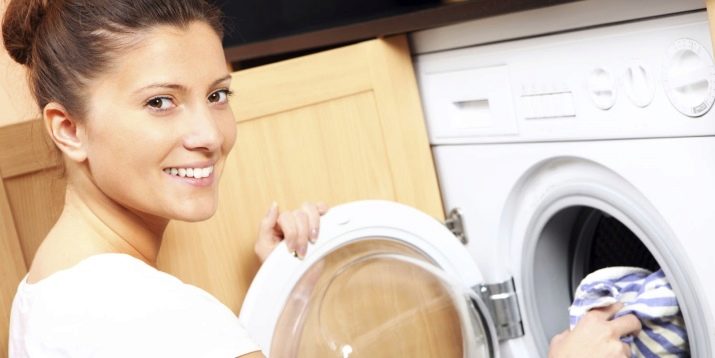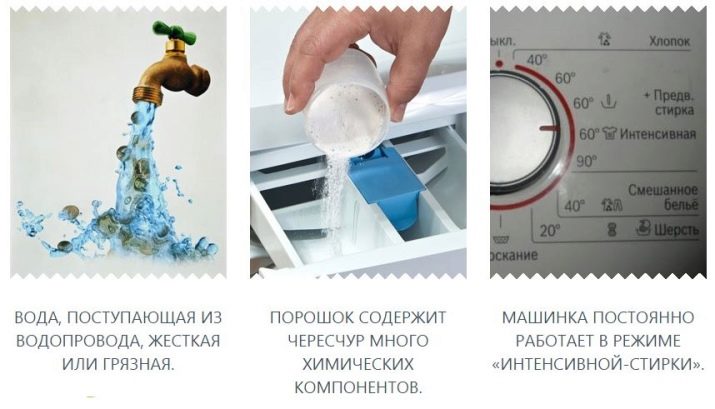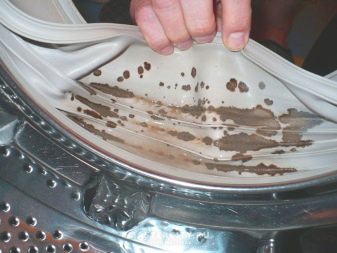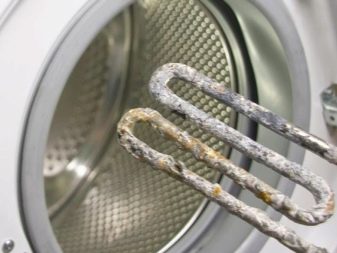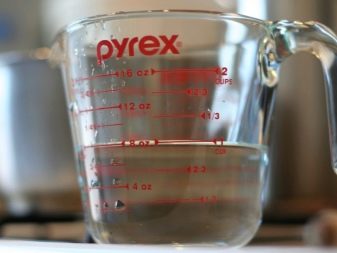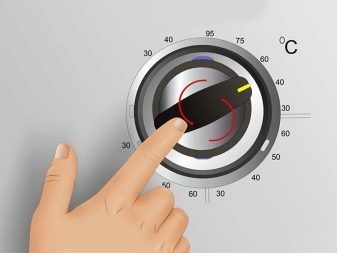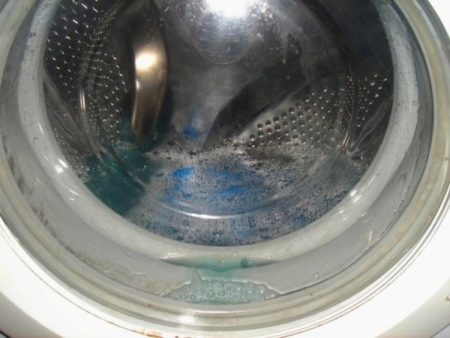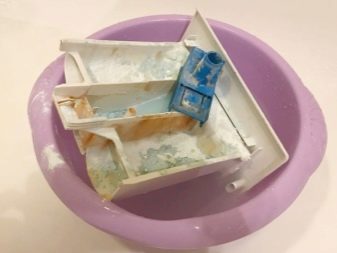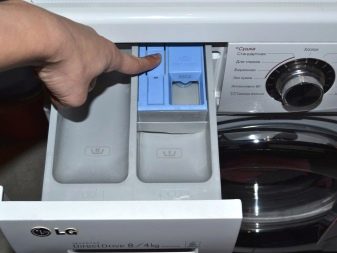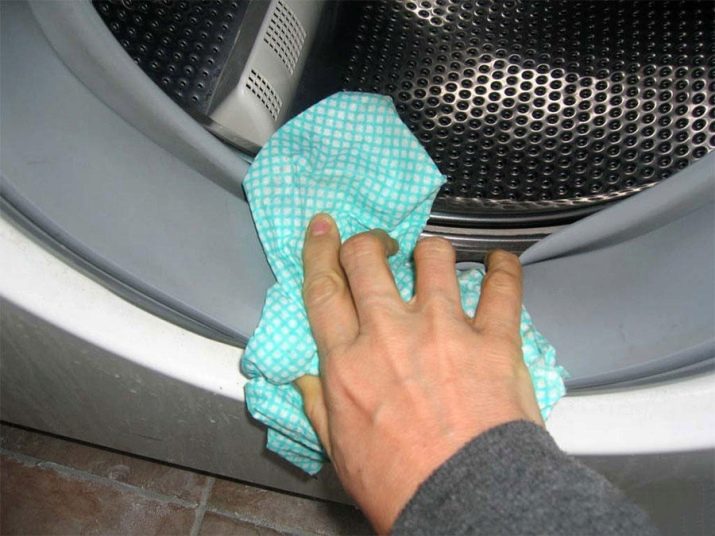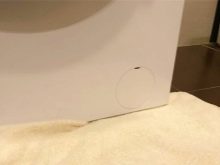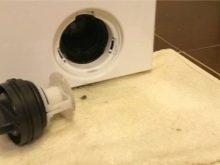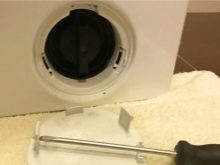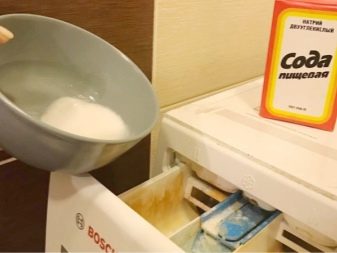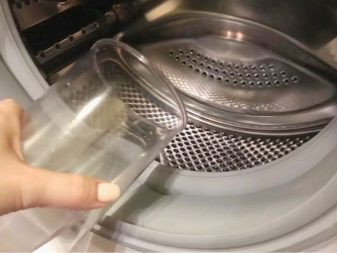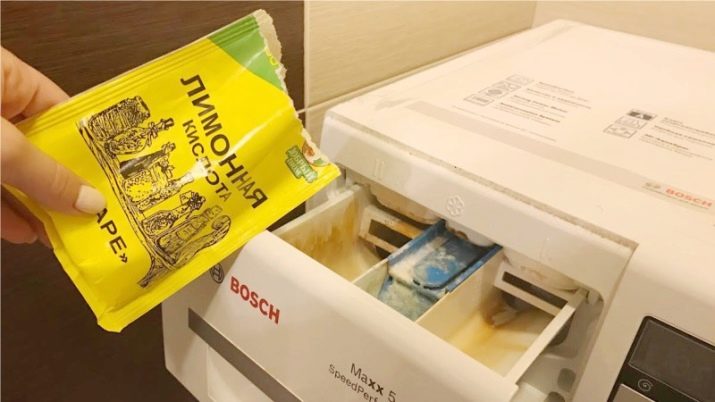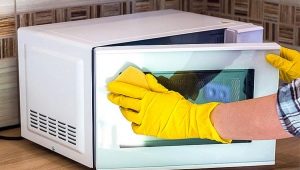Washing the machine with vinegar

Today we can hardly imagine our life without a home assistant - a washing machine. She significantly saves our time and takes care of women's hands, saving them from the effects of washing powders and rinsing products that can dry the skin and cause allergies.
In the process of using the machine, lime scale is formed on its heating element. This is fraught with poor-quality operation of the device and even its failure. To ensure the smooth functioning of the machine, it is necessary from time to time to clean it from scale.
What hurts a washing machine?
Unfortunately, tap water has a high rigidity, because it contains many different salts. During washing, when heated, these substances settle on the internal parts of the machine. Especially a lot of scale accumulates on the heating element. As a result, it takes more time to heat up, and it begins to consume more and more energy.
In addition, the use of certain powders adversely affects the condition of the machine: the presence of a large number of chemicals contributes to the appearance of contaminants inside the apparatus, impeding its work.
At some point, the heating element may burn out, and then expensive repairs will be required, and maybe even have to buy a new “washer”.
In addition, if the machine was not used for a long time and stood with a tightly closed door in a poorly ventilated room with high humidity, a mold could form in it. This not only damages household appliances. Mold spores are detrimental to human health and stain the laundry during the next wash, leaving stains on it.
Timely cleaning of the device will prevent these unpleasant phenomena.. And using vinegar, you can simultaneously achieve two goals. You can get rid of limescale and mold, because mold is afraid of an acidic environment. Also, this product will help get rid of the unpleasant smell and other contaminants that appear after prolonged use.
Acetic Acid Cleaning
A washing machine is expensive and must be handled with care. Therefore, it should be cleaned regularly.
It is quite simple to do at home. Hardware stores offer a variety of tools that can easily cope with the task. The detailed instruction is attached to them. But often these funds are expensive, and many people do not even realize that there are very effective means that are always at hand, and the price of which is low.
Acetic acid is one of them. Any housewife has this product in the house, you can also buy it at any grocery store for a penny. To carry out the procedure is not difficult, you just need to do it correctly.
First of all, you must comply with the correct dose of the product. You also need to carefully select its type: do not use concentrated acetic acid. It will not make a more efficient cleaning, but the machine can harm. When using strong vinegar, rubber parts will suffer, as the process of hardening begins, and then they begin to crumble.
For the procedure, take the usual table 9% vinegar. Two glasses of the product will be quite enough. No other means and washing powders need to be added.
Before carrying out the procedure, remove all things from the machine so as not to spoil them, and pour the product into the drum. Then turn on the machine for the longest cycle with a high temperature. The higher the temperature, the more effective vinegar acts. Therefore, you do not need a rinse mode - it happens in cool water.
After some time (10-15 minutes), when the water is well heated, the car should be stopped for a long time. If you rarely started the machine, wait 1-2 hours. With frequent use or long service life, the time should be increased. This is necessary in order for the vinegar to penetrate to the fine details of the heating element. Then turn on the device again and wait until the end of the cycle.
If the machine was operated for a long time, and you did not perform cleaning from the inside, the procedure should be repeated. Give the unit a “rest” for 1-2 hours and start the cycle with vinegar again.
To finally clean the inside of the machine and wash off the remnants of scale, start a quick wash or rinse cycle. This will help get rid of the smell that appears during the vinegar wash.
If you decide to start the wash cycle, you can add a little laundry detergent or fabric softener with a pleasant aroma.
End of cleaning
So, you have cleaned the machine from the scale that was formed inside. Now it is necessary to finish cleaning - to wash those places where vinegar could not get. For example, in the tray in which you pour the powder and pour the laundry rinse, dirt also accumulates. It also needs to be cleaned in a timely manner.
Prepare a deep bowl. Its depth should be sufficient to immerse the tray completely. Pour into a bowl of hot water and add 1.5 cups of vinegar. Water must be hot enough for vinegar to work better.
Carefully remove the tray from the special compartment. In products of different brands the tray can be removed in different ways, so read the instructions on how to do it correctly.
Now lower the tray into the container with the solution and leave for a few hours. Then clean the tray of dirt with a sponge. For hard-to-reach places, use a brush or an old toothbrush.
After cleaning, rinse the tray in running water and wipe dry with a clean rag.
When you pull out the tray, you will see that there is also a lot of dirt, rust and powder in the compartment. Moisten a cloth with vinegar and wash the compartment. This is not very easy to do, because there are many different projections and depressions in it. If necessary, you can use other non-abrasive cleaners and a brush. Then wipe the compartment clean with a clean, damp cloth. Now you can re-insert the tray.
Another necessary action is cleaning the sealing rubber. Not only dust and dirt accumulate under it. Due to the presence of moisture, mold can form there. It is because of it that an unpleasant smell can appear.
Carefully, in order to prevent damage, pull off the rubber and a cloth moistened with acetic solution, remove contamination. Do not use high concentration vinegar.
Even a small amount of product in the solution will be enough to get rid of mold and harmful microorganisms.
The final stage will be the cleaning of the filter and the drain pump. The filter can accumulate dust, small fibers, fabrics, wool, and even sometimes buttons and coins. The filter is located at the bottom of the machine. Usually it is hidden by the panel.
In the instruction manual you will find instructions on how to remove the panel and open the filter. Before unscrewing it, place a low capacity under the machine to collect the remaining water. Open the filter cover and clean the dirt. Wiping the hole, you can close it and set the panel back.
If the installation method of the machine allows, also rinse the drain hose.
other methods
There are other easily accessible and inexpensive cleaning products that you can find at home or in nearby stores.
Cleaning with soda
For example, you can clean the washing machine with soda.It is possible to apply both calcined, and usual food.
Prepare a "mush", consisting of one part water and one part soda. The mixture obtained process drum, tray, tray compartment, sealing rubber. Leave the compound on the surfaces for about half an hour. Then they should be rubbed with a sponge or soft cloth and include a quick wash cycle.
Soda is an excellent softener for water, so it is advisable to add it when washing. Two tablespoons of this tool is poured into the tray along with detergent. In addition to softening hard water, soda helps to cope with hardly removable stains on cotton underwear.
However, when washing products made of wool, silk and other fine fabrics, it is contraindicated to add soda.
Cleaning with citric acid
The washing machine can also be cleaned with citric acid. It is used as an independent means, and in combination with soda or acetic acid.
Approximately 100-150 grams of the product should be poured into the powder tray (you can add a small amount of it directly to the drum) and turn on the long-running wash cycle with a high temperature. Do not forget to remove the laundry from the drum, otherwise the acid will greatly damage it.
Do not use lemon juice for descaling. Although it has an extremely sour taste, for the descaling of the machine, the concentration of acid in it will not be enough, and you will conduct an absolutely useless procedure.
Preventive care
So that your assistant will serve you for a long time without breakdowns, Some preventive measures must be observed:
- After each start of the machine, wipe dry the drum, tray and tray compartment. Wipe off the rubber especially well. Carefully pushing aside, remove residues of moisture and pollution from under it to avoid the appearance of musty odor and later mold.
- When wiping the tray, do not insert it directly back into the machine to allow air to flow to dry its internal parts. For the same purpose after washing, leave the door ajar for several hours.
- Remember to use anti-scaling agents and anti-scaling compounds, especially if you turn on the high-temperature wash cycle. Use high-quality laundry detergents from reputable manufacturers.
- Do not exceed the required dosage of detergents. To do this, carefully read the instructions, which, as a rule, is contained on the packaging.
- Regularly clean the machine from scale using vinegar, soda, citric acid or other means. Do not forget to clean the filter.
- Laying things in the drum, fasten all the buttons and turn the clothes inside out. Be sure to check the pockets so that there are no items left in them that could ruin the clothes or clog the car.
- Do not wash laundry unnecessarily at very high temperatures. It is during them that the intensive formation of scale on the heating element takes place.
Do not leave the washed laundry for a long time in the car, try to immediately remove it and hang it up to dry, or at least place it in the basin. A warm, humid environment can contribute to the reproduction of pathogenic microbes, fungi and mold.
For more information on how to clean the washing machine with vinegar, see the following video.
